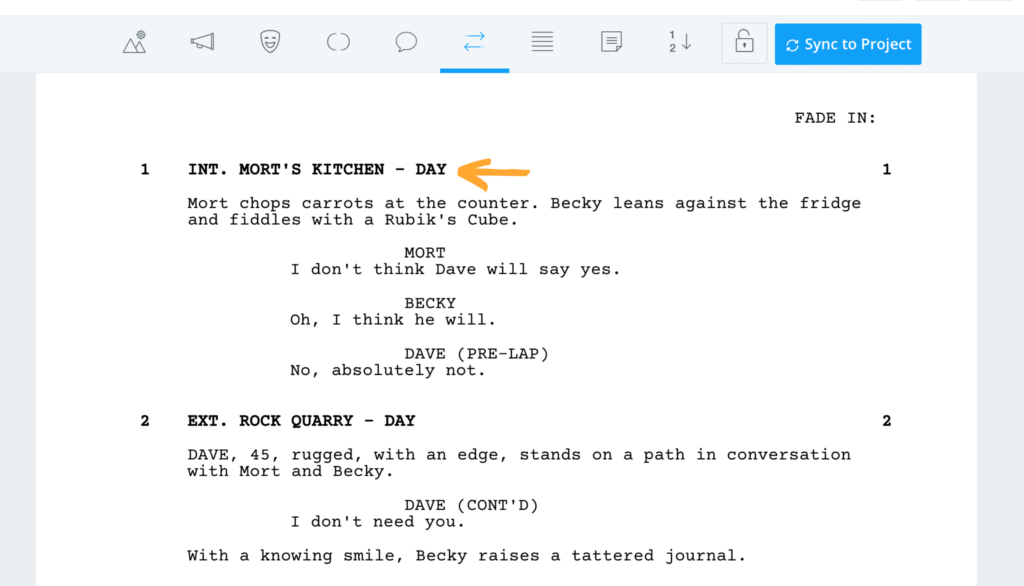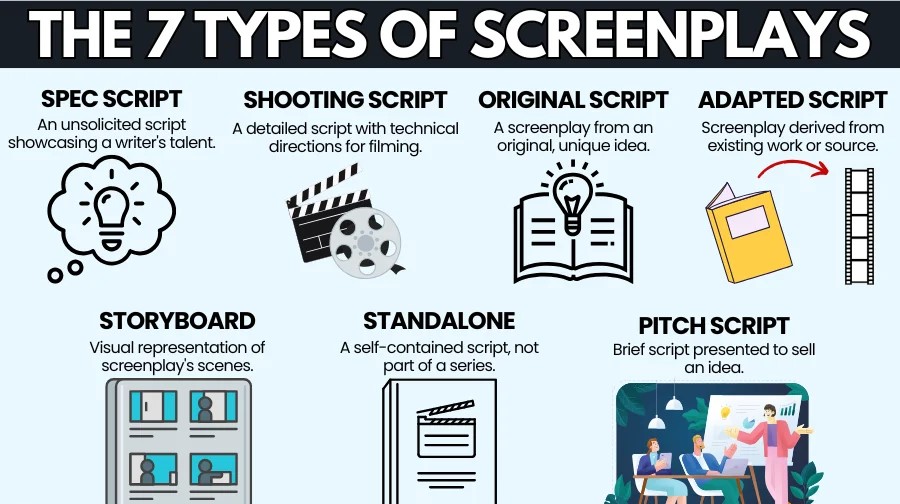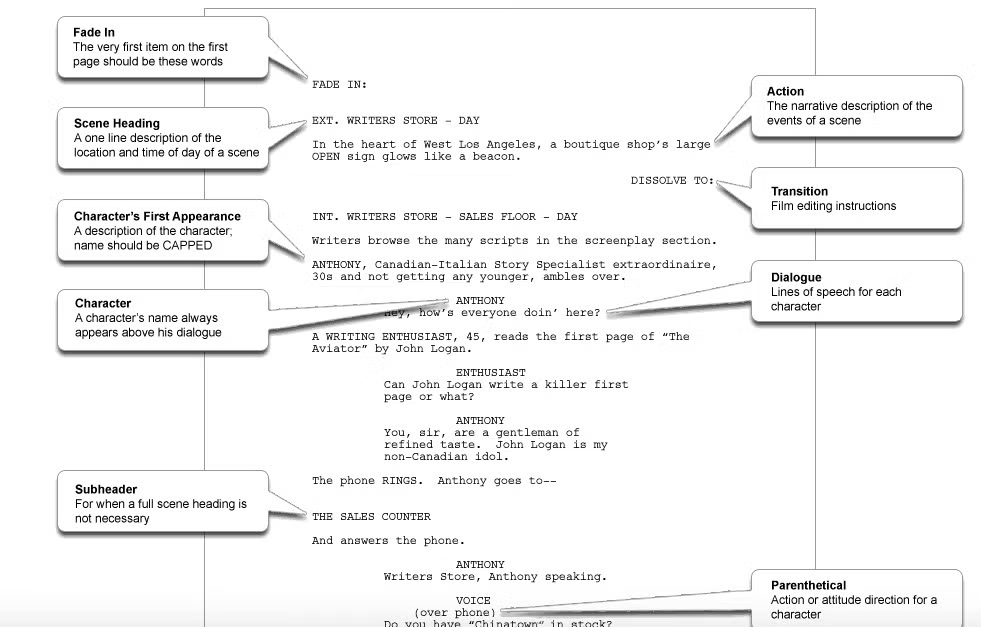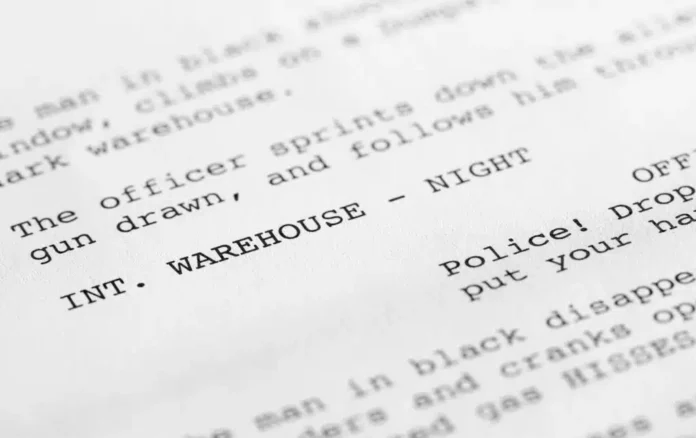Screenplay Format is the first big step in turning an idea into a film. It may look strange at first. But once you understand the basic rules, it becomes easy to follow. It includes scene descriptions, dialogue, character movements and sometimes technical directions.
However, once understood, these rules actually make the writing process easier. You only describe what the camera can see and what the audience can hear. That’s why a screenplay must stay clear. Also, proper formatting plays a crucial role here. It brings structure and discipline to the writing process.
Screenplay Format Types, Key Elements and Examples

A screenplay is the written blueprint for visual media such as films, TV shows, and short films. It includes elements like scene headings, which show where and when the action scene happens, and dialogue, which reveals what characters say. The format also follows specific rules about layout, font, margins, and scene structure. As a result, screenplay format serves as both a storytelling tool and a guide for production planning.
Types of Screenplay Format Explained
Screenplays are written in different formats depending on the type of project. Therefore, knowing the different types of screenplay formats helps writers pick the right one for their story. Here are some of the types or categories of screenplay formats you might come across:
Industry Standard Feature Film Script
An industry-standard feature film script is the format used by professional screenwriters. First, it follows clear rules to make the script easy to read. For example, it is written in 12-point Courier font and includes scene headings like INT. HOUSE – DAY. Additionally, action lines are written in the present tense, character names above dialogue and a few basic transitions like CUT TO.
As a result, this format helps directors, actors and crew understand the story and plan the shoot efficiently. Therefore, if you want to write movies professionally, learning and using this format is essential.
Spec Script vs Shooting Script
A spec script is written to be read, not filmed. At this stage, the goal is to sell the story or get noticed by producers, agents or studios. Later, a shooting script is used during production and by this point, the project is moving forward and the script includes specific instructions.
The spec script sells the story and the shooting script brings it to life.
Stage Play or Theater Scripts
A stage play or theater script is written specifically for live performance. Unlike screenplays, it leaves more room for directors and actors to interpret the performance. The focus is on language, timing, and interaction rather than visual effects. Dramatic monologues often play a key role, allowing characters to express deep emotions or reveal important backstory directly to the audience. Stage directions are usually simple, written in parentheses or italics, and describe entrances, exits, and key movements. So, if you are writing for the stage, clarity and strong dialogue matter more than cinematic detail.
TV Script Formats with Single-Cam vs Multi-Cam
Single-camera scripts look a lot like film scripts, focusing on detailed scene descriptions and cinematic storytelling. Multi-camera scripts resemble stage plays and are used mostly for sitcoms filmed in front of a live audience. Single-cam scripts are more like movies, while multi-cam scripts are closer to live theater.
Non-Traditional or Hybrid Formats
Non-traditional or hybrid screenplay formats break away from the usual rules to fit unique creative needs. These formats are less about industry standards and more about expressing a specific vision clearly and this allows for creativity but still requires clarity to communicate the story effectively.
The Director’s Script
The director’s script is a version of the screenplay used during filming to guide the production team. This script includes detailed notes like camera angles, shot types and timing. It’s a practical tool that turns the written story into a visual reality and making sure everyone on set knows exactly what to do.

Basic Elements of a Screenplay and What Every Script Needs
You want to write your own screenplay or just understand movies better, then this is a great place to start. Let’s find out what really makes a script tick.
Set the Stage: Scene Headings
Every scene starts with a scene heading that tells us three things:
- Where the scene takes place
- Whether it’s inside (INT.) or outside (EXT.)
- The time of day usually DAY or NIGHT.
Scene headings help everyone know where and when the action happens. Use a new heading whenever the location or time changes.
Action That Speaks: Description Lines
After the scene heading, you write the description lines. Keep it clear and short and use active verbs to make the action feel alive. Description lines are not for thoughts or feelings but for what can be seen or heard.
Who’s Talking? Character Names
First, when a character is introduced for the first time and their name is written in ALL CAPS. So, this helps you notice new characters easily. Next, when the character starts talking and their name appears above their dialogue.
Speak the Truth: Dialogue
First, when characters talk, their dialogue should sound honest and clear. So, this means they say what they really think or feel. Avoid exposition dumps that’s when characters just explain a lot of background or information all at once, which can feel unnatural.
How They Say It: Parentheticals
Use parentheticals a little to show how to say something. Don’t tell the actor exactly what to do.
Example: (sarcastic)
Wow, you really nailed that plan.
Cutting Room Tools: Transitions
First, remember that transitions like CUT TO:, FADE OUT: or SMASH TO: are tools for the editor. But, use these transitions only when needed to help the story flow.
Example of Screenplay Format Template

Title: [Your Screenplay Title]
Written by: [Your Name]
INT./EXT. LOCATION – TIME OF DAY
Action / Description:
This is a description of what’s happening in the scene. Keep it in the present tense and be concise.
CHARACTER NAME
(centered, uppercase)
(Parenthetical)
Optional, usually for how the line is said.
Dialogue:
The character’s spoken lines.
Here is an example of Screenplay Format:
INT. RESTAURANT – NIGHT
The table is set with candles and wine glasses. MAYA and JACK sit across from each other, smiling and leaning in.
MAYA
I have been looking forward to this all week.
JACK
Me too. You look amazing tonight.
They clink their glasses gently.
Key Elements of a Screenplay Example:
- Scene Heading (Slugline): INT./EXT. (interior/exterior), location, and time of day (e.g., INT. RESTAURANT – NIGHT).
- Action: Describes what’s happening visually in the scene.
- Character Name: The speaker’s name, centered and uppercase.
- Dialogue: The lines the character speaks, under the character name.
- Parentheticals (optional): Brief instructions on how dialogue is delivered, placed in parentheses under the character name.
Why Screenplay Format Matters For Your Script
Using the correct screenplay format helps your script look professional and easy to read. Whether you are writing a short-film or a feature length movie following standard screenplay helps your story shine without any errors. With time and effort, your script can go from an idea to something ready for the screen. Happy Writing!

